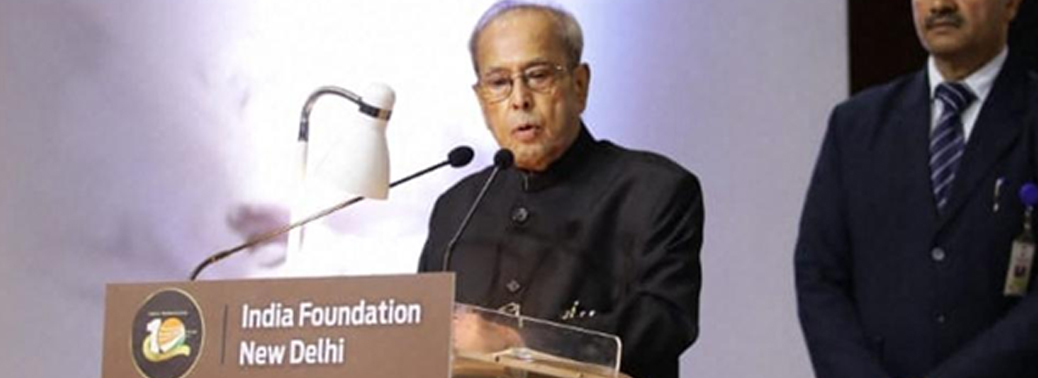INCREASE THE NUMBER OF LOK SABHA SEATS: FORMER PRESIDENT
18, Dec 2019

Prelims level : Polity -Legislature
Mains level : GS-II Parliament and State Legislatures - Structure, Functioning.
Why in News?
- Former President Shri Pranab Mukherjee has recently argued for increasing the number of Lok sabha seats to 1000.
- He mentioned about raising the number of Lok Sabha constituencies to 1,000 from the existing 543 and for a corresponding increase in the Rajya Sabha’s strength as India has a “disproportionately large size” of electorate for elected representatives.
Current Scenario of Delimitation:
- Delimitation is commonly used in the context of drawing boundaries for Assembly and Lok Sabha Constituencies based on the recent census.
- As per Article 82, Parliament by law enacts a Delimitation Act after every census. Once the Act comes into force, the Central Government constitutes a Delimitation Commission.
- The present delimitation of constituencies has been done on the basis of 2001 census and has been in use since the 2009 Lok Sabha Elections.
- According to a 2002 Constitution Amendment, there will be no further delimitation of constituencies till the first census after 2026.
Article 82:
- Article 82 of Indian Constitution provides for delimitation and it says: Upon the completion of each census, the allocation of seats in the House of the people to the States and the division of each State into territorial constituencies shall be readjusted by such authority and in such manner as Parliament may by law determine.
- Provided that until the relevant figures for the first census taken after the year 2026 have been published , it shall not be necessary to readjust:
- The allocation of seats in the house of people to the states as readjusted on the basis of the 1971 census.
- The division of each state into territorial constituencies as may be readjusted on the basis of the 2001 census.
Amendments regarding freezing of Delimitation Process:
1. 42nd Amendment Act:
- The 42ndAmendment Act of 1976 froze the allocation of seats in the Lok Sabha to the states and the division of each state into territorial constituencies till the year 2000 at the 1971 level.
2. 84th Amendment Act:
- The 84thamendment Act of 2001froze the allocation of lok sabha seats to states for the next 25 years (i.e. upto year 2026).
- The 84thAmendment Act of 2001 also empowered the government to undertake readjustment and rationalisation of territorial constituencies in the states on the basis of the population figures of 1991 census.
3. 87th Amendment Act:
- Later, the 87thAmendment Act of 2003 provided for the delimitation of constituencies on the basis of 2001 census and not 1991 census. However, this can be done without altering the number of seats allotted to each state in the Lok Sabha.
Reasons behind the Act of Freezing:
- Promotion of Family Planning
- Population stabilization
- Basically it was done to ensure that various state carry out measure to control their population and not worry about the reduction in their respective political representation.
Impact of such a Freeze:
1.Inadequate Representation in the Parliament:
- The number of seats have not increased in last 30 years but the population has grown by around 90 percent since then.
- So technically the number of representatives should also have been doubled.
- This has also led to increased burden on individual MPs.
2.Distortion among states
- The demographics across states have changed drastically leading to northern states being under represented (as their population has increased but nit the seats) while southern states over represented (as their population ratio has declined but the seats have not).
- For example if the seats are allocated according to the current population distribution then following would happen:
| States | Current allocation | What it would be |
|---|---|---|
| UP | 80 | 93 |
| Bihar | 40 | 44 |
| Andhra Pradesh | 42 | 37 |
| Telangana | 39 | 29 |
Representation of Urban People:
- The rapid pace of urbanization has led to drastic increase in the population of the cities and hence they are underrepresented.
- There are only about 89 urban seats (16%) in the country but we have 31.5% urban population.







